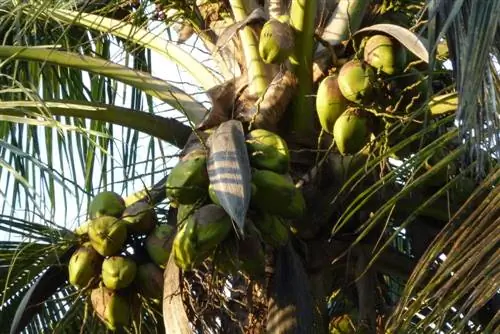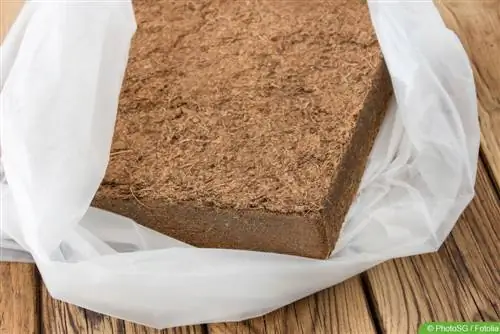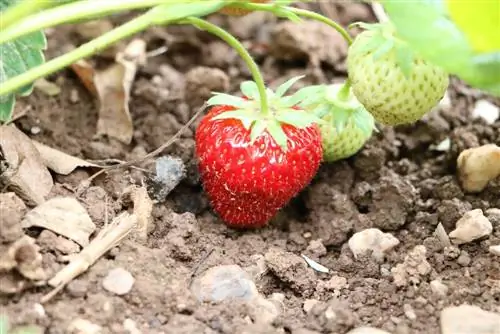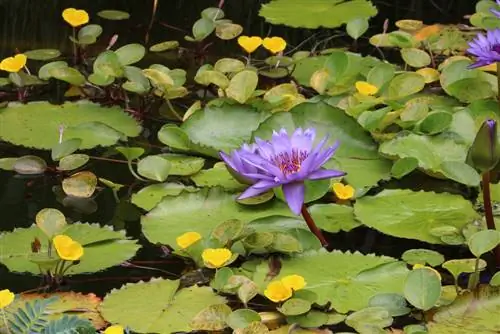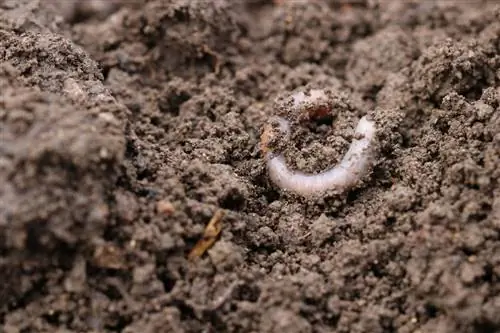- Author admin [email protected].
- Public 2023-12-17 03:39.
- Last modified 2025-01-24 12:45.
The new planting season begins in spring. Hobby gardeners and plant lovers always ask themselves the same question: Which planting substrate is the best growing substrate for my plants? Traditionally, potting soil or potting soil is used, but Seramis or coconut soil are also well-known alternatives. Coconut soil in particular, which can be used like conventional potting soil, is much easier to transport than the heavy, bulky packages of potting soil. What other advantages does coconut soil offer?
A natural plant substrate
Coconut clay is 100 percent natural. The term “soil” is actually misleading, because coconut soil is made from plant fibers. The substrate is made from the bark of the coconut palm, which grows in tropical countries, and is therefore considered a renewable raw material. The plant fibers that are processed into coconut soil are a waste product from the production of coconut products. Coconut palms do not have to be grown separately for this. The plant fibers are chopped, ground, sterilized and pressed together. Packaged in handy packages, the coconut soil from overseas then ends up in the garden center.
The pressed packages in the form of swelling tablets, pellets or the size of bricks contain no moisture and therefore only weigh a few grams. They only weigh around 1/3 of the weight of potting soil. Coconut soil is biodegradable and free of pollutants and chemicals. Coconut soil can absorb many times its weight in water.
14 swelling tablets produce one liter of plant substrate with 500 ml of water. After adding water, a block of coconut soil develops a volume of around nine liters of soil.
Positive characteristics
Coconut soil does not contain peat. Bogs, the main source of peat, are drained to make potting soil. Peat acts as a water reservoir in potting soil and is used to loosen the substrate. Both functions are replaced by coconut soil 1:1. Chopped coconut shells, which are left over from the extraction of the coconut meat, are used in coconut substrates to loosen it up. The use of peat is therefore completely unnecessary. Not only rare plants and animals die due to peat mining.
Climate-hostile CO2, which has been stored in peat for a long time, is released through its drainage and degradation and rises into the atmosphere. Many square kilometers of moor are drained every year to produce flower speech. This is an ecological disaster!
Drained bogs are already visible from space as brown areas in Google Earth! Even organic soils consist of 80 percent peat.
The nutrients
- Coconut soil contains no nutrients
- Nutrients must be added as external fertilizers
- The fertilizer requirement can be tailored explicitly to the individual plants
- The light consistency of coconut soil stimulates the growth of the roots
Coconut soil can be used as growing soil by adding appropriate nutrients!
Tip:
Meet the needs of azaleas and rhododendrons when using coconut soil by adding bark mulch, leaves or spruce needles!
No germs, harmful insects and mold
Coconut soil is free of insects, mold spores and larvae of plant pests. Repotted plants and sowings therefore do not suffer from infestation by springtails, fungus gnats or various fungal diseases, which destroy tender crops particularly quickly.
Advantages over potting soil

Conventional potting soil is dark and finely crumbly. It looks particularly high quality. When water is added, the potting soil becomes compacted because porous ingredients are missing. The result is poor growth and yellow leaves on the young plants because irrigation water cannot drain well and the young roots are constantly wet. Small chopped coconut shells are therefore added to the growing soil made from coconut. They ensure that coconut soil is well permeable even when moist and retains its crumbly structure.
Growing with swelling tablets
Each swelling tablet made from coconut fiber is dimensioned so that it can later accommodate a young plant. For sowing, several swelling tablets are placed next to each other in a seed tray. A waterproof container is used for a single swelling tablet. Now the swelling tablets are poured with water. The swelling time is around five minutes. The excess water is then poured off. The swelling tablets have significantly expanded their volume due to the water they have absorbed. Each swelling tablet is now surrounded by a fine-meshed net, which keeps the swelling tablet in shape.
The net is now slightly cut into the top and the plant seeds are pressed into the substrate with a pricking stick. The opening is now closed again and, if necessary, covered with coconut fiber. As with real soil, the germination process takes place in a bright, warm place if the coconut plant ball is kept moist regularly. If the plant has developed well, it can be planted together with the swelling tablet in a larger container or outdoors as soon as the roots grow through the net. The net is not removed. This would damage the root ball. It is biodegradable and will decompose independently in the soil after some time.
Tip:
Avoid waterlogging and ensure good air circulation!
Fertilizer
Coconut soil can be fertilized in two ways. Commercially available fertilizer can be added during the swelling process. The coconut soil absorbs the plant nutrients and later releases them to the seedling during watering. Another option is to add the fertilizer directly with the irrigation water. A solid long-term fertilizer that is planted directly and dissolves slowly ensures a regular supply of nutrients over a longer period of time.
Frequently asked questions
Can coconut soil be recommended as a growing soil?
Yes, because coconut soil is permeable to water and does not mold.
What are the most important advantages over potting soil?
cheap
light weight
small volume during transport
Contribution to environmental protection
What do I have to consider when buying coconut soil?
Sustainably produced coconut soil is marked by a seal of quality.
How long do the growing pots made of coconut soil last?
Souling tablets made from coconut soil rot within a few months.

